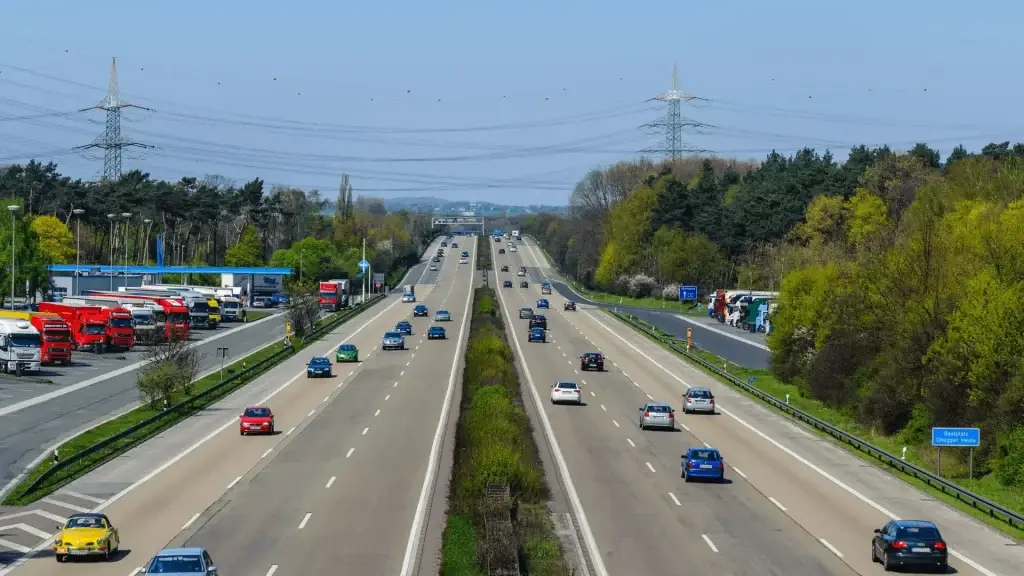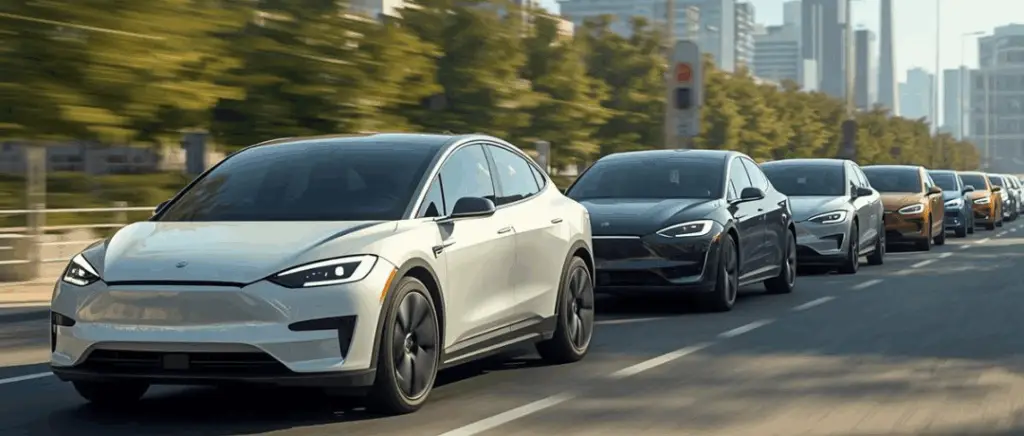Monday to Friday 9am - 12.30pm - 2pm - 7pm
What is a Low Emission Zone (LEZ)?
Low-emission mobility zones (ZFE-m) refer to a delimited area within which traffic is regulated according to the pollution generated by vehicles. This is not a French concept, since it derives from the low emission zones (LEZ) that have been deployed across Europe for two decades. It was created in 2015, as part of the implementation of law no. 2015-992 relating to the Energy Transition for Green Growth (TECV Law).
The EPZs replace the ZCR (restricted traffic zones), while at the same time giving local authorities a wide scope for action to combat the greenhouse gas emissions produced by the most polluting vehicles. The aim of such a scheme is twofold:
- Short term : improving air quality at the heart of conurbations by promoting sustainable modes of transport.
- Over the long term: moving towards energy transition and promote the decarbonisation of vehicles.
The Crit'Air system
In practical terms, the purpose of low-emission zones is to restrict the circulation of vehicles deemed to be polluting or highly polluting in busy urban areas.
To achieve this, they rely on the Crit'Air stickerswhich ranks vehicles according to their greenhouse gas (GHG) emissions. Vehicles are given a score between 0 and 5, depending on their level of pollution. Users wishing to drive in a ZFE-m must affix the sticker corresponding to the class of their vehicle to their windscreen. Only the least polluting vehicles are allowed access. Traffic restrictions and the Crit'Air rating required to enter a ZFE-m are set by the local authorities.
The Crit'Air classification is based on three parameters: the fuel, the type of vehicle (commercial vehicle, private car, motorbike, moped or HGV) and the Euro standard (which can be found by referring to field V9 on the registration certificate).
You can find out your vehicle's classification immediately by filling in a form on the official Ministry of Ecological Transition.
Gradual tightening of the rules
To facilitate the transition to soft mobility, local authorities are invited to implement a progressive schedule of restrictions. However, m-FTAs are characterised by ambitious targets that aim for the ideal of "zero emissions".
In Paris, the first EPZ to be introduced in France, the ban on Crit'Air 3 (Euro 4 diesel and petrol vehicles) will take effect in 2025. In 2030, petrol cars (all categories) will also be banned. Only 100% electric vehiclesor rechargeable hybrids (until 2030), will be allowed to circulate in the capital and its metropolitan area.
Read also : the end of combustion-powered cars by 2035.
Why were the EPZs created?
As well as the deleterious effects of pollution emitted by vehicles on the environment, greenhouse gas emissions raise public health issues. According to ADEME, fine particle emissions are responsible for more than 40,000 deaths a year in France (Santé publique France study).
Unsurprisingly, pollution peaks are much more frequent in and around major urban centres. Among the categories incriminated, diesel-powered road transport vehicles account for 63 % in nitrogen oxide emissions and 14 % in particulate matter (PM10) emissions.
According to the French Environment and Energy Management Agency (ADEME), the m-FTAs have a significant impact on reducing urban pollution, enabling a 12 % reduction in nitrogen oxide and fine particle emissions.
It should also be remembered that restricted traffic zones have been in place throughout Europe for several years. We therefore have reliable feedback from experience, enabling us to highlight the benefits of such a system. In London, the introduction of a permanent EPZ in the heart of the city led to a reduction in nitrogen oxide emissions of 29 %. Similar results were observed in Lisbon and Berlin (reduction of 12 %).
What are the stages involved in rolling out an EPZ?
The launch of a low-emission zone is based on a rigorous analysis to define the different modalities:
- demarcation of the zone: since 12 December 2018 (interministerial decree), the perimeter of EPZs must be marked with specific signs. This signage must be installed at the entrance and exit of the zone (panel B56).
- the categories affected by the driving ban must be specified by a sign clearly indicating the extent of the restrictions.
- users affected by the access ban must be able to choose an alternative route or, failing that, use other modes of transport to complete their journey.
Which areas are concerned?
Voted on 22 August 2021, the Climate and Resilience Act introduced the generalisation of the ZFE-m (low emission mobility zones) to the whole of France. This applies to all conurbations with more than 150,000 inhabitantsIn addition, the French authorities are now obliged to introduce m-FEZs by the beginning of 2025. While local authorities remain free to set their own timetable for restrictions, they must enforce traffic bans if air quality falls below regulatory thresholds.
For further information : 1 January 2025: forthcoming changes to the EPZs
What changes are in store for private individuals?
Motorists are of course affected by the roll-out of the ZFE-m throughout France. The current Crit'Air regulations require motorists to use a sticker indicating the level of pollution emitted by their vehicle. To access the zones concerned, users must obtain this precious pass.
The procedure can be carried out online at the official website certificat-air.gouv.fr. It involves running a simulation to find out the Crit'Air level of your car, then ordering the corresponding sticker (for a fee of €3.62). The sticker is sent directly by post to the applicant's home address.
People whose vehicles are not eligible (too polluting) or who have not applied for a vignette are not allowed to drive in the ZFE-m. This has consequences for users. Those whose place of work is located in a restricted zone are forced to find alternative modes of transport.
Risks in the event of non-compliance
Driving an ineligible vehicle in a ZFE-m exposes the driver to a fixed fine of 68 € for light-duty vehicles and 135 € for heavy goods vehicles.
Exemptions have been made for vehicles used to transport disabled people (on presentation of a dedicated parking card).
Checks may be carried out at any time by the police, whether the vehicle is moving or parked.
Between health benefits and financial burden
Prevention stakeholders and users agree that it is essential to find solutions to effectively reduce greenhouse gas emissions. The ZFE-m scheme is undoubtedly one of the tools that can be used to achieve results in this area. But we also need to take into account the impact on society as a whole, particularly for the poorest households. It is precisely the least well-off socio-professional categories that are likely to pay the heaviest price for these changes.
Indeed, owners of polluting cars (Crit'Air 4 or 5 or not classified) do not always have sufficient means to renew their vehicle. The challenge is huge, since by 2020, vehicles in the Crit'Air 1 and 2 categories will account for barely half the vehicle fleet, including in urban and suburban centres.
It's not always possible to use public transport, especially if you have to work odd hours or make multiple journeys, such as dropping your children off at crèches or schools.
The extension of the ZFE-m therefore raises questions about the precarious situation of some households. Against this backdrop, the government has launched a number of financial assistance programmes for the individuals concerned.
Aid for the purchase of a clean vehicle
Renewed in 2024, the amount granted to professionals and private individuals by the ecological bonus will be disclosed shortly. To be eligible for this aid, the vehicle must be worth less than €47,000 and weigh less than 2.4 tonnes. In addition, electric vehicles will be subject to an environmental score, linked to the CO2 emissions generated both by their materials and by their transport.
La conversion premiumThis scheme, which can be combined with the environmental bonus, provides a maximum of €5,000 towards the purchase of a new car. electric car or plug-in hybrid as part of the scrappage of an old car. thermal vehicle pollutant (diesel or petrol). Since 2021, users living in or near an EPZ can obtain a €1,000 surcharge.
These national schemes are backed up by local aid, distributed at the initiative of local authorities.
The Greater Paris metropolitan area has launched the Métropole Roule Propre allowing residents of the Ile-de-France region to combine government and local grants under a single scheme. The total amount of funding can be up to €18,000 for a new electric vehicle and €13,000 for a used electric vehicle.
Finally, the French government is offering a microcredit of up to €5,000 repayable over 5 years to finance a clean vehicle, available on a means-tested basis.
The EPZ: what impact will it have on businesses?
Businesses are directly affected by the extension of the ZFE-m, which will require them to reorganise their fleets and adapt the modes of transport used by their employees.
The prospects for a greener company car fleet are obvious, particularly in the context of the LOM Act which imposes a quota of clean vehicles for all organisations with a fleet of more than 100 units.
The environmental and health issues are all the more important as the majority of GHG emissions come from road transport vehicles. 6.3 million light commercial vehicles (LCVs) were recorded as being in circulation in France on 1ᵉʳ January 2022. However, diesel continues to dominate the LCV fleet, with a share of 95%.
Restrictions on access and traffic in the EPZs may jeopardise the activity and production of certain companies, in particular :
- Companies offering a goods delivery and transport service in large conurbations;
- tradesmen who visit their customers' homes to carry out work and repairs (plumbers, electricians, locksmiths, joiners, etc.);
- companies carrying out canvassing operations using field sales staff or making company cars available to their employees, if the latter use their vehicles to travel in these areas.
It is therefore in the interests of professionals who do not want to suffer a drop in efficiency to plan ahead for the conversion of their commercial vehicles, giving preference to hybrid or 100 % electric vehicles.
In addition to the aids introduced by the government mentioned above (conversion bonus and ecological bonus), companies can benefit from exemption from company vehicle tax (TVS) and more advantageous taxation (reduction in tax on vehicle registration documents).
Read also : EPZ: what's new for company commercial vehicles
As proven decarbonisation tools, low-emission mobility zones reflect the urgent need to reduce polluting emissions in major urban centres. They are nonetheless restrictive for private individuals and professionals who are unable to give up their cars for their journeys. With the help of national and local grants, however, it is possible to lighten the budgetary burden of financing a clean vehicle and/or encourage soft mobility.
































